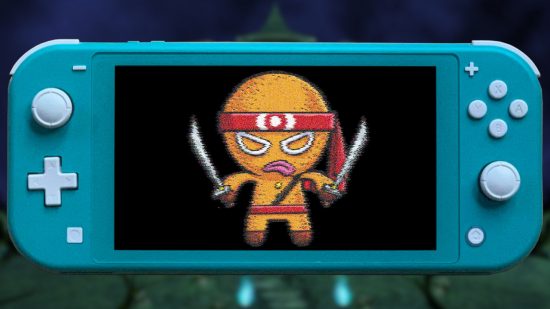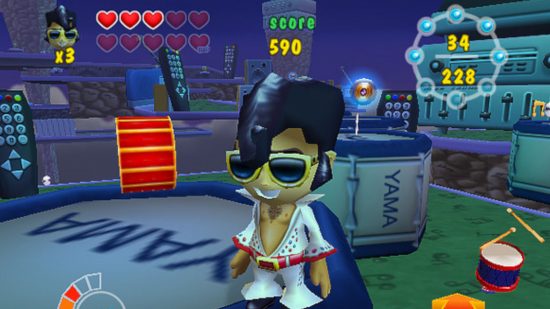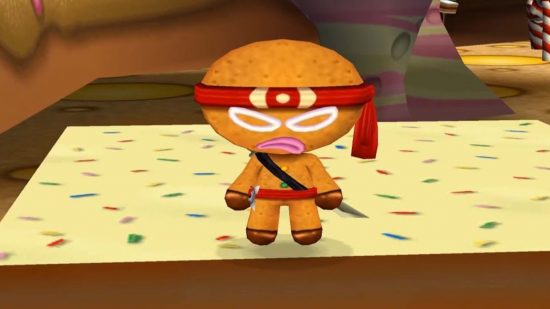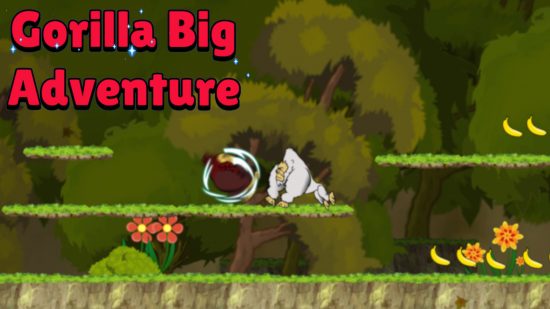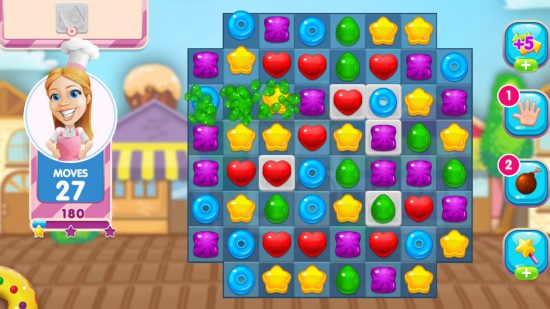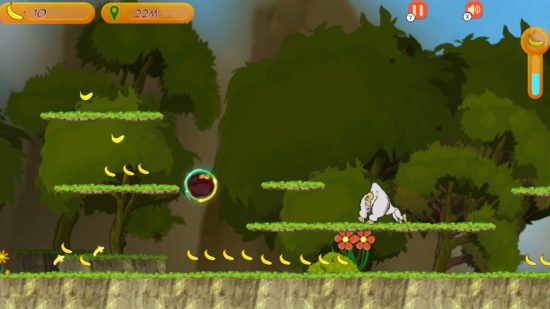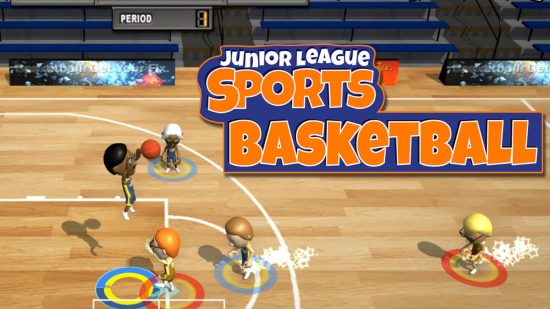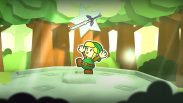In the West Midlands of England, where I live, there’s a place called Stourbridge. Nothing much good has ever come from Stourbridge. Something bad has, though. Something so bad that it’s widely accepted as one of the worst games of the twenty-first century, something that led to a string of terrible titles and scathing YouTube essays, and it’s something you might know about yourself. Ninjabread Man is from Stourbridge.
If you don’t know Ninjabread Man, you presumably had a better childhood than I did, but those who have played the 2007 Wii title know just what an awful experience the game is. Essentially, Ninjabread Man is one of the most prominent examples of shovelware to ever exist in the industry, with the title offering little in the way of gameplay, replayability, and, most importantly, value for money.
Starting life as a Zool title, before the rights holders to Zool saw some work-in-progress development and quickly pulled the project, Ninjabread Man was pieced together by Data Design Interactive in the UK first for PC and PlayStation 2 in 2005, before releasing as the first part of DDI’s ‘Popcorn Games’ line with Koch Media. I say pieced together, as, on top of the fact Ninjabread Man barely functions as a game, it also contains some elements left behind from the Zool build, and for some reason, a PNG of Shrek 2’s Gingy in place of the titular sweet treat assassin.
Now, Ninjabread Man itself was awful, of course, but what could be more awful? Well, almost immediately after the maligned launch of the Wii title, DDI would also release Anubis II, Myth Makers: Trixie in Toyland, and Rock ‘n’ Roll Adventures, three more ‘Popcorn Games’ titles that would reveal an even more cynical approach to development than their predecessor by helping to popularise the term “asset flipping”.
Asset flipping is a big part of the shovelware problem. Essentially, Ninjabread Man and the three DDI titles released shortly after are all the same game, just with different assets. In Ninjabread Man, it’s a candy-filled world, and DDI swaps this out for the style of each title from ancient Egypt for Anubis, to musical instruments for Rock ‘n’ Roll Adventures, and so on.
Still, despite the abject awfulness of the games put out by DDI through the Popcorn Games series, the short-term plan worked. An article from IGN in 2008 states that at the time of writing, DDI had a 40% market share of the European value games market, with the article stating the reason for this as “DDI had more Wii titles ready last Xmas than EA, Ubisoft or other companies a thousand times bigger than themselves and their hard work and marketing strategy has enabled them to grab their targeted 40% market share of the European value priced Wii market”. With just the little we know about asset flipping, the term ‘hard work’ is doing some very heavy lifting here.
The success did not last long. Less than five years after the release of Ninjabread Man, DDI disappeared, with its leader, Stewart Green, vanishing into the gaming aether – though not forever. Still, despite the big dog of shovelware going missing, funnily enough around the time that YouTube essays on the horrendousness of the Popcorn Games titles started to emerge, what should have marked the end of the shovelware era was, in fact, a glimpse into the future.
As online digital game marketplaces started to boom in popularity, PlayStation and Xbox worked to bring in more third-party games to keep up with the expanding reach of the Steam store. In this rush to bring as many games as possible, sub-par content managed to sneak in among the AAA titles and endearing indies, and it wouldn’t be long before venture capitalists turned developers would try their hand at asset flipping, taking assets owned by others and using them for poorly made games.
Now, with the exception of the Popcorn Games line, Nintendo continued to do the good quality control work its been known for since the early days of the Nintendo seal of quality. Despite its sales shortcomings, the Wii U had some of the best quality control across all platforms at the time, with Nintendo concentrating on porting old titles to its modern hardware over cramming the marketplace with titles made only to disappoint.
Unfortunately, that attitude didn’t carry over into the Switch era. At the 78th Annual General Meeting of Shareholders in mid-2018, just a year after the launch of the Switch, Nintendo told its investors that it planned to release 20-30 indie games a week in order to keep up with both the demand for cheaper games and to try and challenge the other consoles for their indie credibility. Whether this was a well-intentioned move to make more indies available, or Nintendo jumping on the opportunity to maximise profit from a successful console, we’ll never know, but the cynic in me has an inkling. Either way, after setting that target Nintendo needed to meet it, and it wouldn’t let something silly like the fact that there aren’t 20-30 quality indie titles to bring to Switch on a weekly basis stop it. So, the shovelware era returned, this time with lower prices, but even lower quality.
An excellent example of the sort of shite I’m talking about comes from Gorilla Big Adventure, a title released on Switch in January 2021 for the price of just five dollars. Described as an “endless runner”, you take control of the titular gorilla to guide them through a neverending landscape of either jungle or frozen jungle. Everything about the game is bad, the hitboxes are laughable, the designs get repetitive before even reaching 100 metres with your primate pal, and the UI looks as if it had been put together by one monkey sitting behind a computer for ten minutes.
Gorilla Big Adventure is so bad it makes Ninjabread Man look like a work of historical note, like GTA IV or Skyrim. With assets simply taken from the Unity store – no, really, you can find them here – Gorilla Big Adventure is just one of over 80 titles available from shovelware developer Pix Arts on the Nintendo Eshop, with some other highlights including Sweet Sugar Candy, a Candy Crush copy that’s just begging for a lawsuit, World Soccer Cup 2022, which makes Konami’s car crash EFootball look like the real thing, and Jumping Stack Ball. I’m not going to elaborate on that last one, because, well, it’s not worth it. Use your imagination.
So, while shovelware was a problem back in 2008, it’s even more of a problem now. While we would like to think that parents are perfectly aware of the content their children are consuming, it would be hard to convince even myself that any parent is sitting down and reading reviews, doing their due diligence, before allowing their snotty-nosed kid to part with just over five dollars. For an example of this, simply Google the term “child spends on Candy Crush” and you’ll see just how much control parents really have over their gaming children. Simply put, no one is doing consumer awareness for kids, and without what I like to call “the Flash context”, an awareness of the Flash games that anyone born in the nineties can remember on sites like Miniclip and Newgrounds, the youth don’t know quite how bad a deal they’re getting.
The Flash context is a big deal as us nineties babies grew up playing higher quality games in-browser than the sort Pix Arts puts out for free. In this day and age, there’s no such thing as a truly free game, there are cheap games, and “free-to-play” titles loaded with ads or microtransactions, but really, a truly free game doesn’t exist. So, when I look at something like Gorilla Big Adventure for five dollars I think “I’ve played better games than that for free”, while a seven-year-old with a penchant for monkey adventures won’t have the same experience.
Consumer awareness in gaming is always a contentious issue, with different countries and continents having their own opinion on how publishers and developers should market their products. For example, Belgium banned loot boxes, with the government deciding that the practice constitutes as gambling. Loot boxes are bad, don’t get me wrong, but the problem with shovelware and asset-flipped titles is that there’s no gamble, just a guarantee of a bad time.
Gaming is, of course, something fuelled by capitalism, with the industry infamous for bleeding the wallets and purses of parents dry with endless titles, microtransactions, and any other way they can squeeze a dollar out of you. This should present a problem for Nintendo, the brand that hangs its hat on its perception as the family console, with the Japanese gaming juggernaut seemingly having no problem with the sort of odious content arriving on its platform week-by-week.
It’s not just the kids who should be mad though, the influx of shovelware is a problem for the indie developers that Nintendo was originally trying to court with its plan to bring more titles to Switch. With the way the Eshop works and the limitations on how you use it, indie titles that solo devs or small teams have poured their hearts into are lined up alongside titles like Gorilla Big Adventure, with many of the sub-par shovelware options lowering their prices to attract kids looking to part with their pocket money. It’s worth pointing out that the average allowance in the U.S.A is something like four dollars, and with the price of a lot of asset-flipped titles floating around the same margin, it’s not too much of a reach to imagine an impatient kid – as most are – opting for something like World Cup Soccer 22 over waiting ten weeks to afford last year’s FIFA.
I’ll finish this call to arms against the ongoing wave of shovelware by letting you know something interesting. In the year 2022, DDI’s infamous Ninjabread Man isn’t available on Switch, but that doesn’t mean that there’s no sign of the influence of the studio on Nintendo Hardware today. The most maddening element of all of this is that in the year 2022, or perhaps 2023 by now, it’s still possible to accidentally pick up the metaphorical pile of dog poo that is a Data Design developed title. If you search the term “junior” in the eShop you find four titles under the Junior League Sports banner, including a 3-in-1 priced at around $30. All of these titles are the work of Data Design Interactive, first released on Wii in 2009, and later ported to Switch thanks to publishing from Funbox Media.
As you might expect, these titles feel like the gaming equivalent of a first draft, the laying out of intentions, but somehow are on the consoles of an unknown number of unwitting sports fans. Just like Ninjabread Man, and a bulk of the shovelware and asset flipped titles you find across all platforms, these titles are squarely aimed at the youth demographic, so much so that the word “junior” is included in the titles of each different sports simulator.
These DDI monstrosities, the slew of Pix Arts titles new to Switch, and countless other examples all show that for all the good work Nintendo has done reinvigorating itself with the Switch, there’s a problem under the surface of the eShop, and the ghost of Ninjabread Man haunts us like a sweet spectre of doom. Worse still, you can regularly find these games in sales, and while it presents less of a problem in terms of value, it means that more kids are going to play bad games. This might not be a problem for industry bigwigs, but for those of us who believe that the industry needs to inspire the next generation of developers and creators, it paints a bleak image of what the future might be. Sometimes a quote from the Simpsons says it better than anything else could, and in this instance, I’ll end with the infamous words of Helen Lovejoy. Won’t somebody please think of the children?
